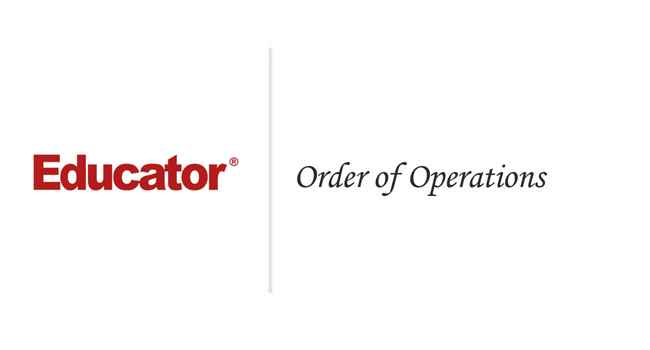Connecting...

This is a quick preview of the lesson. For full access, please Log In or Sign up.
For more information, please see full course syllabus of Algebra 1
For more information, please see full course syllabus of Algebra 1
Algebra 1 Order of Operations
Lecture Description
Dr. Fraser begins with an example and the definition of Order of Operations. The procedure to evaluate an arithmetic expression is next and consists of starting with grouping symbols, then moving onto powers, multiplying/dividing from left to right, and finishing with adding/subtracting left to right. The lecture concludes with four video examples where you will evaluate arithmetic expressions.The standard order of operations, or precedence, is expressed in the following exponents and roots.
Bookmark & Share
Embed
Share this knowledge with your friends!
Copy & Paste this embed code into your website’s HTML
Please ensure that your website editor is in text mode when you paste the code.(In Wordpress, the mode button is on the top right corner.)
×
Since this lesson is not free, only the preview will appear on your website.
- - Allow users to view the embedded video in full-size.
Next Lecture
Previous Lecture









































 Carleen Eaton
Carleen Eaton Grant Fraser
Grant Fraser Eric Smith
Eric Smith
 Answer Engine
Answer Engine


1 answer
Last reply by: Jorge Sardinas
Sun Apr 15, 2012 7:01 PM
Post by Jorge Sardinas on April 15, 2012
i get it
0 answers
Post by javier mancha on August 20, 2011
if 3 square minus 2, is in ( parenthasis) .. then why is he working out the, exponent, first,, AND NOT THE (parenthasis) FIRST,WTF
3 answers
Last reply by: javier mancha
Sat Aug 20, 2011 10:38 PM
Post by victoria wu on June 10, 2011
at what age do u usually start algebra?
not sure if i am at the right level.
5 answers
Last reply by: Lucas Santiago
Tue Jun 12, 2012 6:51 PM
Post by curtis wikel on June 7, 2009
Example 1 you bring down the -12 and then subtract not add ? +324, to get 312, you lost me there is not 12-24=12 how did it become -12